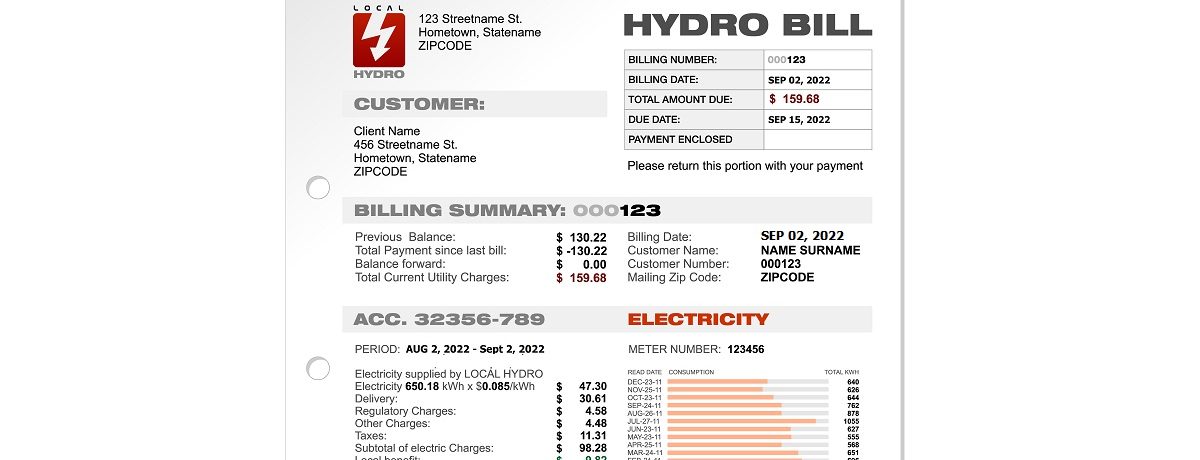Is the Rising Cost of Electricity a Threat?
It’s difficult to ignore the challenge of rising energy costs here in the US, nor elsewhere.
Rising rents, food prices, taxes, transportation, and heating costs are reducing tenant’s disposable income to zero. The net outcome is difficulty for tenants paying their bills, and for landlords, some possible business losses.
In Hawaii as an example, electricity costs are the highest in the US. Hawaiian Electric Company (HECO) reports that the shutdown of a coal powered electric plant will push prices even higher for Hawaiians. One tenant reported by KITV News has had his power bill rise by 50%.
Hawaii Senate Minority Leader Kurt Fevella has requested Hawaii declare a state of emergency over the rising cost of electricity. In KITV report, environmental advocate Henry Curtis called HECO’s price hikes “a perfect storm” and believes little can be done about it.
If the price of oil and natural gas rise like they have have in Europe, the situation could be dire for many low to mid level income renters in the US. The US had built one of the best outlooks for energy independence, yet forces are active to curtail that positive status.
In California, perhaps the state with the most dire circumstances, the government announced a directive to not charge up electric powered vehicles.
“Consumers are urged to conserve electricity, especially during the late afternoon and early evening, when the grid is most stressed due to higher demand and less solar energy.” — from flexalert.org. This underscores a looming challenge for tenants and landlords.
Carbon Energy Sources Abruptly Curtailed
The obsession with ending carbon energy sources is creating cost effects that will hit tenants hard. The sudden loss of coal, fuel oil, along with the cost of wind/solar production has created a cost shockwave. The Biden government is issuing inflation/stimulus checks in October 2022 to compensate however, financial assistance from that spending bill will run out and tenant’s battle with electricity bills may land at your desk.
In fact, you may have already been on the hook for some tenant’s power bills (you may want to write leases more carefully regarding electricity bills as part of a new business model and protect yourself legally).
Renewable Infrastructure Simply Isn’t Ready
The media isn’t covering the real costs of electric power, nor the cost of building renewable infrastructure. And while renewable energy is desirable, the cost of implementing it seems to be borne more by homeowners, renters and senior citizens who must pay full fare for electricity during daylight hours.
Unfortunately, electricity as a total power source seems less viable and more expensive than most people believe. Electricity is also being used to create hydrogen, a controversial solution.
Alternative sources of electricity are expensive to build, and production and delivery is harder to scale up, and wind turbines/solar panels are less reliable. The worry is that soon we may see lengthy blackouts.
Who Will Actually Pay for Electricity?
Additionally, some providers are providing electricity at ultralow rates (below cost) between 12:00 am and 6 am, which means homeowners who use energy during the day, will end up subsidizing EV owners who are charging their cars cheaply at night. This may not sit well with low income renters/homeowners/landlords as they see their bills rise. And many of them don’t drive EVs.
There is a lot about the cost of electricity that’s not reported to the public.

Screenshot courtesy of TradingEconomics. Electricity Cost Index
For tenants, the outlook is for higher rents, higher taxes, rising food prices and transportation costs along with higher heating and fast rising electrical bills. For landlords and property managers, the trend will lead to lower rent prices, illegal tenants, higher maintenance costs, and legal headaches (rent defaults, evictions).
The financial pressure is already being felt by tenants, and we wonder what’s ahead for the rental housing industry.
California to Ban Gas Powered Cars
California’s state government just announced a law to ban the sale of new gasoline powered cars by 2035, well ahead of any Federal deadlines. They are seeking to get rid of all carbon power sources within 22 years.
With California’s electrical grid already severely challenged, we have to wonder how it will perform when electric-powered cars become the norm. Will they enjoy the subsidized prices of charging in early morning hours? What happens when people realize who is really paying to power California public and private vehicles?
Transitioning to only electric power brings excessive demands on a power generation and distribution grid that can’t meet the challenge. A report from Yahoo Finance’s Akiko Fujita goes in depth on California’s bleak situation. One expert, Ram Rajagopal, an associate professor of Civil and Environmental Engineering at Stanford University says the California system is likely not going to be able to handle it.
California in a Power Generation Predicament
According to the Yahoo Finance report, California currently generates only 30% of its power consumption from renewables. The mandates could serve to create an emergency crisis in the years ahead. These laws discourage realistic power generation developments powered by carbon based fuels. Currently, natural gas, coal, hydro, nuclear, and other fuels power electrical generation in the USA.
With oil prices beginning to rise this week, Californians, who pay the highest gas prices face cost burdens they likely can’t meet. Many landlords too face these rising costs, while not being allowed to pass them onto tenants.
California residents and businesses are leaving the state thus undermining tax revenues to carry out many of the governments planned initiatives. Remaining landlords will be left holding the bill. Here’s PG&E’s advice for landlords.
As a landlord, you must pass all of these rising costs onto tenants just to sustain your business. This means the outlook for improved profit will only come from property management software automation, staffing efficiencies, and rising rents.
California Sends Out Alerts
California’s energy officials have sent out warnings regarding electricity blackouts in the state as it suffers through yet another heat wave. Power line sparks from California’s PG&E grid has been cited as a likely source of many forest fires that raged across the state burning countless homes and other structures, and killing residents.
Yet, even without heat waves and forest fires, the growing demand of electric vehicles will strain their system and likely drive electricity costs much higher. Such costs would make life tough for renters and commuters (EVs too) in San Diego, Los Angeles, and the Bay Area.
With rent prices already climbing, more rising costs from food, transportation, heating and air conditioning, and taxes, it stands to reason tenants will face a crisis point where they can’t afford their rent payments.
The California situation is worrisome however, with its higher rent prices, big taxes, and all-in-commitment to electricity. EIA’s stats in the chart below show the US northeast too is particularly plagued with high prices.
US States with Highest Electric Prices vs net Summer Capacity
| State | Average retail price (cents/kWh) | Net summer capacity (MW) | Net generation (MWh) | Total retail sales (MWh) |
| Hawaii | $27.55 | 2,994 | 9,079,019 | 8,796,761 |
| Alaska | $19.82 | 2,767 | 6,276,441 | 5,917,577 |
| Connecticut | $19.13 | 10,276 | 41,190,572 | 27,113,673 |
| Rhode Island | $18.54 | 2,129 | 8,894,940 | 7,351,541 |
| Massachusetts | $18.19 | 13,002 | 18,214,141 | 50,009,341 |
| California | $18.00 | 78,055 | 193,074,930 | 250,174,672 |
| New Hampshire | $16.63 | 4,478 | 16,350,578 | 10,693,529 |
| Vermont | $16.33 | 829 | 2,156,407 | 5,331,458 |
| New York | $14.87 | 40,243 | 129,430,271 | 140,406,632 |
| New Jersey | $13.63 | 17,424 | 61,106,458 | 71,998,221 |
| Maine | $13.54 | 4,875 | 10,001,870 | 11,346,740 |
| Michigan | $12.21 | 29,603 | 106,624,721 | 97,011,906 |
| District of Columbia | $11.90 | 42 | 201,104 | 9,785,775 |
| Maryland | $11.15 | 13,809 | 36,029,204 | 57,629,040 |
| Wisconsin | $10.82 | 16,544 | 61,448,545 | 67,448,361 |
| U.S. Total | $10.59 | 1,115,682 | 4,007,018,595 | 3,717,674,481 |
When real estate investors hunt for rental property, they’re hoping for a location with stable costs, flexible rent price laws, a prosperous economy with rental demand, and lower real estate prices.
The best places to buy rental property may be a long way away. Landlords and property management firms will have to look at their own businesses differently (remote management too) to stay in business in these coming more lean profit years.
Tips on Reducing Electricity Consumption
Does California and other states have a viable solution for rising electricity costs? Here are 15 tips:
- switch to higher energy efficiency appliances
- change from electric to natural gas stoves, water heaters, and furnaces
- use metered electrical for each apartment or condo in your building
- have tenants apply for a local electric service account and put up their own safety deposits if necessary
- stipulate rules in your lease if the tenant has their electric supply cut off
- choose the most energy efficient heat pumps and air conditioners
- conduct maintenance on your HVAC systems to keep them running optimally
- put ceiling fans into bedrooms and living areas
- use blackout window blinds
- install LED light bulbs throughout unit
- encourage tenants to buy low-emission gas powered vehicles
- increase home insulation to retain air conditioned comfort
- improved roofing systems
- renovate apartments/houses to include highly reflective Low E coatings on windows
- pass on energy saving tips to tenants via their ManageCasa tenant portal
Of course, many upgrades create expense which unfortunately leads to increased costs. Find more tips on energy consumption reduction on energy.gov.
The key to energy upgrades is to keep your property management costs under control, and to keep rent increases minimal so you don’t see tenant churn and suffer through additional turnover costs.
The energy crisis will affect your business at some point. That’s why adopting property management automation is a wise decision. You’ll need the savings in administration, improvement in tenant services, and streamlined property accounting.
Lowering property management costs is in your hands.
Learn more about ManageCasa’s cost efficient management tools.
Property Management Software | Property Accounting Tips | Property Accounting Software | Lower Property Management Costs | Reviews of Property Management Software | Renovation Costs | Apartment Renovation Ideas | Writing Rental Leases | Recession Proofing | Fight Inflation | Homelessness | Collect Rent Due | Tenant Eviction







